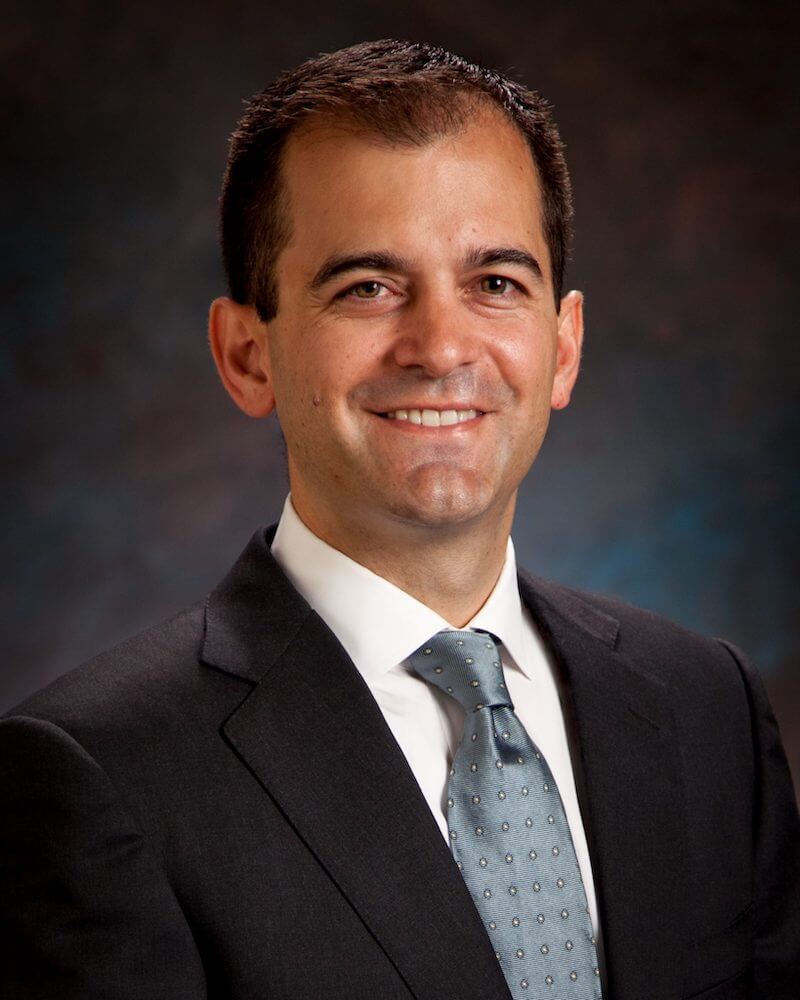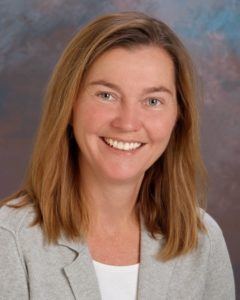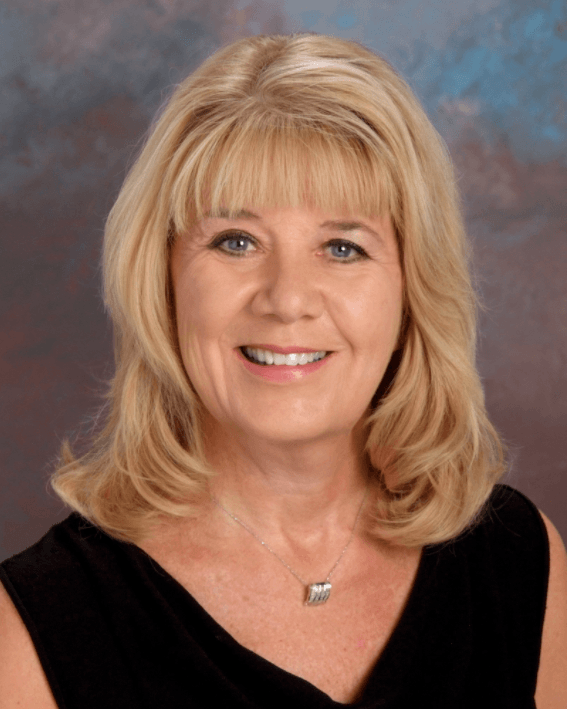‘Asleep’ DBS Achieves Comparable Outcomes to ‘Awake’ DBS
In DBS surgery, a pacemaker-like device called a neurostimulator is implanted under the skin in the chest and connected to an electrode in the brain. The battery-operated device is programmed to deliver electrical signals to specific areas of the brain, regulating abnormal signals and providing symptom relief for people with Parkinson’s disease, essential tremor, or dystonia.

Neurosurgeon
Dr. Ponce’s findings were part of a study published in the Journal of Neurosurgery. The study concluded that the electrode can be placed using intraoperative imaging while a patient is under general anesthesia and achieve comparable outcomes to the traditional placement method, which involves using microelectrode recording while a patient is awake.
“We also found that the ‘asleep’ surgeries were more predictable and took less time overall, patients were more comfortable, and the whole operating room environment became more controlled,” Dr. Ponce said.
In the “awake” surgery, a local anesthetic is used to numb the patient’s scalp and a rigid frame is placed around the patient’s head to keep it still. The neurosurgeon makes an incision in the skull while the patient is sedated, places the electrode based on the trajectory identified with pre-operative magnetic resonance imaging (MRI), and then uses microelectrodes to record brain cell activity to confirm that the electrode is in the correct place.
“A lot of this surgery was developed before we had MR imaging to really illustrate the target,” Dr. Ponce explained. “Surgeons would put sharp little micro wires in the brain and listen to the individual cells firing. They would do multiple trajectories and find the optimal electrophysiological area, place the electrode, and then turn it on and look for side effects and clinical benefit.”
In “asleep” DBS surgery, the neurosurgeon uses a portable computed tomography (CT) scanner in the operating room to produce an image of the tiny structures in the brain and confirm that the electrode is in the correct place. Using intraoperative imaging instead of microelectrode recording allows the patient to be under general anesthesia for the entire procedure.
“What made ‘asleep’ surgery possible was the improvement in MRI over the past 15 years, which allows us to really image the structure that we’re targeting, combined with the ability to verify through a dime-sized hole that we’re actually hitting the target within 1 or 2 millimeters,” Dr. Ponce said. “Not only are we picking our target based on MRI, but we’re also verifying that we’re hitting that target with an intraoperative CT scanner.”
Dr. Ponce said that while most people do well during the “awake” procedure and some actually report not remembering being awake due to the sedative, the fear of being awake during surgery is a deterrent for many candidates.

Neurologist
Neurologist Dr. Holly Shill, the director of the Muhammad Ali Parkinson Center at Barrow, said candidates include people who have essential tremor that does not respond to medication and significantly affects their quality of life, and people who have had Parkinson’s disease for at least four years that is responsive to levodopa but have started to have problems with the medication.
“The reason ‘asleep’ DBS came to fruition was Dr. Kim Burchiel in Oregon determined there was a whole patient population who would never have considered this surgery had it been done awake,” said DBS Program Coordinator Meg Lambert. “Anxiety, claustrophobia, and chronic neck and back pain are just a few of the reasons why people would not have considered it.”
Dr. Ponce learned the technique from Dr. Burchiel and performed his first DBS case at Barrow in March 2012. As of early March 2016, he had performed “awake” DBS surgery on 191 patients and “asleep” DBS surgery on 300 patients. He now uses the “asleep” method for virtually all DBS cases.
Dr. Ponce also usually places the electrode and implants the neurostimulator during the same procedure. Some centers have patients undergo a separate surgery to implant the neurostimulator.
“It really makes the therapy more accessible by allowing patients to come in and have it all done in less than half a day,” he said.
After surgery, a neurologist works with the patient to get the neurostimulator optimally programmed and determine how much the patient’s medication can be reduced. Dr. Shill said Parkinson’s patients are usually able to reduce their medication intake by about 30 to 50 percent after DBS surgery.
“People tend to have slow, steady improvement after the programming has been done,” Dr. Shill said. “There’s actually improvement from six months to a year out.”
Lambert captures anecdotal and statistical data on all DBS patients at Barrow. She brings Parkinson’s patients back six months after surgery to evaluate their motor function using the Unified Parkinson’s Disease Rating Scale (UPDRS). Parkinson’s patients also fill out the 39-item Parkinson’s Disease Questionnaire (PDQ-39) before and after surgery to evaluate their quality of life.

DBS Program Coordinator
“It’s staggering, the difference in the scores regarding their perception of quality of life after surgery,” she said.
Dr. Ponce said the number of neurosurgeons performing “asleep” DBS surgery is increasing throughout the country as patients become more informed about their options.
“Patients are kind of speaking with their feet, seeking out centers that offer asleep DBS,” he said. “That coupled with the increasing amount of data demonstrating good outcomes with ‘asleep’ surgery, I think, is slowly going to result in a transition in how this procedure is performed.”
